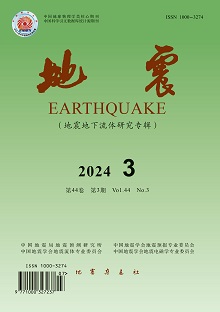伊朗德黑兰地区地震引发的古滑坡及其在评估地震灾害中的作用
Q4 Earth and Planetary Sciences
引用次数: 0
摘要
在阿拉伯-欧亚大陆碰撞带的中部,德黑兰地区位于伊朗中部低地(南面)和阿尔伯兹高地(北面)地震构造带之间的过渡边界。因此,在这一活跃的构造区域发生了许多破坏性地震事件。本研究深入探讨了该地区北部高地范围内的构造地貌,尤其侧重于 E-striking 北倾北德黑兰断层(NTF)带的悬壁。我们在这一北部地区的发现强调了几个突出的地形疤痕,它们是重要的共震特征。这些地形疤痕包括巨大的滑坡、落石、岩崩和偏移地貌面,可能是主要的间接共震形态特征。在这一地震活跃地区,这些地貌证据的广泛尺寸揭示了德黑兰地区发生真正强震(即 M>7.5)的地震潜力。这些结果与德黑兰地区之前通过不同的地震危害评估方法估算出的最大可信地震(MCE)震级(即 M~7.2)形成了鲜明对比。因此,以前的德黑兰地区地震危险性评估可能低估了地震风险,因此,有必要根据这一重要地区更详细的地震地质特征,进行更新和补充的确定性地震危险性评估。本文章由计算机程序翻译,如有差异,请以英文原文为准。
Earthquake-induced paleo-landslides in the Tehran Region and its role in assessing the seismic hazard, Iran
In the central portion of the Arabia-Eurasia collision zone, the Tehran domain is positioned at a transitional boundary between seismotectonic zones of the Central Iranian lowland (to the south) and the Alborz highland (to the north). Consequently, numerous destructive seismic events have occurred in this active tectonic domain. This study delves into the tectonic geomorphology of the region within its northern highland domain, specifically focusing on the hanging wall of the E-striking north-dipping North Tehran fault (NTF) zone. Our findings in this northern domain emphasize several prominent topographic scars as significant co-seismic features. These include huge landslides, rockfalls, rock avalanches, and offset geomorphic surfaces and could be present as the main indirect co-seismic morphological features. Within this seismically active region, the extensive dimensions of these geomorphic pieces of evidence reveal the seismic potential of the Tehran Region to experience really strong earthquakes (i.e. M>7.5). These results contrast with the previous Maximum Credible Earthquake (MCE) magnitude estimated for the Tehran Region (i.e. M~7.2) through different approaches in Seismic Hazard Assessments (SHAs). Consequently, the previous SHAs of the Tehran Region might have underestimated the seismic risk, and therefore, it is necessary to conduct an updated and complementary deterministic SHA based on the more detailed seismogenic geological features in this crucial area.
求助全文
通过发布文献求助,成功后即可免费获取论文全文。
去求助
来源期刊

地震
Earth and Planetary Sciences-Geophysics
CiteScore
0.60
自引率
0.00%
发文量
3214
期刊介绍:
Earthquake is a comprehensive academic journal hosted by the China Earthquake Network Centre (CENC) and edited by Mr. Wang Haitao, Director of CENC and a senior researcher. The purpose of the journal is to exchange research results on earthquake observation, earthquake precursors and strong earthquake mechanism and prediction, and to promote the exploration and research on earthquake forecasting and the application of its results in earthquake prevention and disaster reduction. The readers are mainly earthquake scientists and technicians engaged in the research of earthquake observation and analysis, earthquake precursor exploration, earthquake mechanism and prediction, as well as scientists and technicians in related scientific and technological fields.
Inclusion:
The Chinese core periodicals in the general list of the core periodicals
Chinese Science Citation Database (CSCD) Source Journals
Scopus (Netherlands) Source Journals
Japan Science and Technology Literature Database (JST) source journals
 求助内容:
求助内容: 应助结果提醒方式:
应助结果提醒方式:


